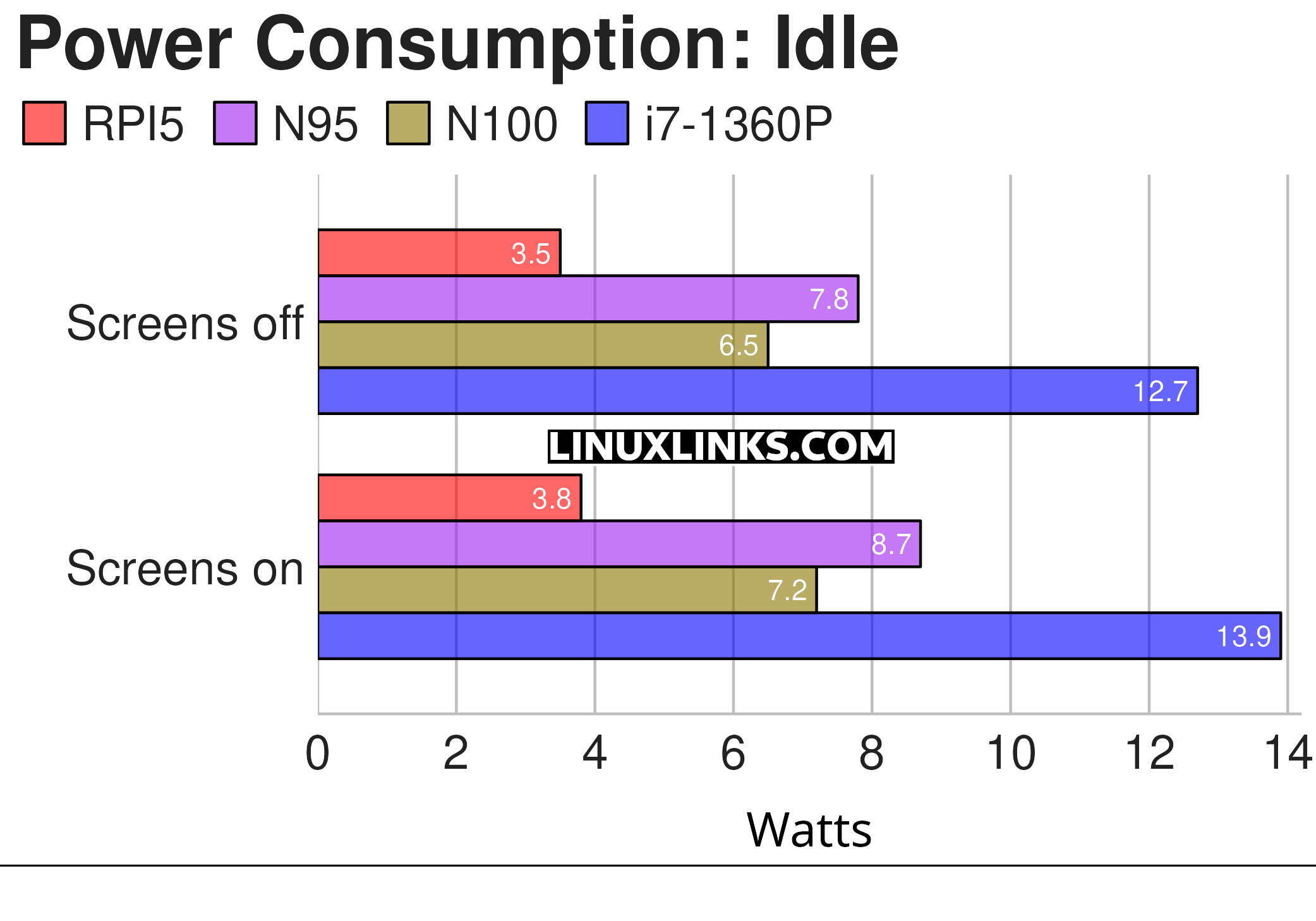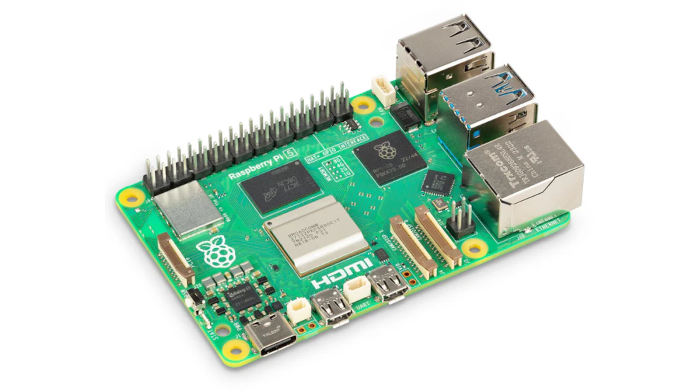This is a new series looking at using the Raspberry Pi 5 as a Desktop Mini PC.
The Raspberry Pi 5 features a 64-bit Broadcom BCM2712 quad-core Arm Cortex-A76 processor running at 2.4GHz. I’m using the 4GB RAM model, but the Pi 5 is also available with 2GB, 8GB, or 16GB of RAM. My Pi 5 is housed in a resplendent Sunfounder Pironman 5 NVMe Mini PC Case (my review) from SunFounder.
For this article, I’ll focus on the power consumption of the Pi. I’ll see how the Pi 5 compares to a few other mini PCs which cost considerably more (even taking into account the cost of the case, NVMe, and power supply).
The chart below shows the power consumption of the Pi 5 compared to the DreamQuest N95, DreamQuest N100, and the Intel NUC (i7-1360P).

As the chart above shows, the Pi 5 draws the least power when idling. In fact, it’s amazingly frugal compared to the other machines. This might be a crucial factor if, for example, you’re going to use the Pi 5 as a home server machine such as a backup server.
The chart needs explanations to put the results into context.
- The chart measures the power consumption of each system (not only the CPU). It doesn’t include the two monitors.
- All the machines have onboard graphics only.
- None of the machines have power management functionality built into the BIOS.
- The DreamQuest and Intel Mini PCs are using the Power Saver CPU governor. The Pi 5 is using its default settings with no underclocking. When idle the Pi 5 runs at 1500 MHz.
- WiFi and Bluetooth are enabled on all machines. It’s possible to shave a little off the results but most users will probably want the standard settings enabled.
- The Pi 5 is running the Raspberry Pi OS (which is based on Debian 12). The other machines are running Ubuntu 25.04.
Next page: Page 2 – Power Consumption With Light Usage
Pages in this article:
Page 1 – Power Consumption With System Idle
Page 2 – Power Consumption With Light Usage
Page 3 – Power Consumption With CPU Stressed
Page 4 – Electricity Costs / Specifications
All articles in this series:
| Raspberry Pi 5 Series | |
|---|---|
Hardware | |
| iRasptek Starter Kit | All the kit you need to get started with the Pi 5 |
| Pironman 5 Case Review | Transform the Pi 5 into a beautiful desktop mini PC |
| Passive Cooling the Pi 5 | Passively cool your Pi 5 the right way. Silent yet cool |
| Benchmarking | Benchmarking the Pi 5 against an Intel N100 mini PC |
| Overclocking | Let's increase the clock speed of the BCM2712 SoC |
| Power Consumption | Compare the power consumption of the Pi 5 with Intel Mini PCs |
| 2.5Gbps Networking | Improving the wired performance of the Pi 5 |
| WiFi | Improve WiFi performance of the Pi 5 |
| Desktop PC | Is the Pi 5 good value compared to an Intel N100 Mini PC? |
Configuration | |
| raspi-config | Useful text-based tool to configure the Pi 5 |
| PiGro | GUI tool that streamlines the process of managing the Pi 5 |
| Increase Swap Memory Size | Increase the swap size from 512MB to 2GB |
| ZRAM swapdrive | Simple script to use a ZRAM swapdrive instead of a swapfile |
Software | |
| Installing Software | Different ways to install software on the Pi 5 |
| df snap pollution | Replace df with dysk |
| Ollama GUI | Running Large Language Models on the Pi 5 |
| Music Players | GUI and TUI music players explored |
| Internet Radio | Exploring the best options for both GUI and TUI software |
| Many software articles are planned. Stay tuned! | |
